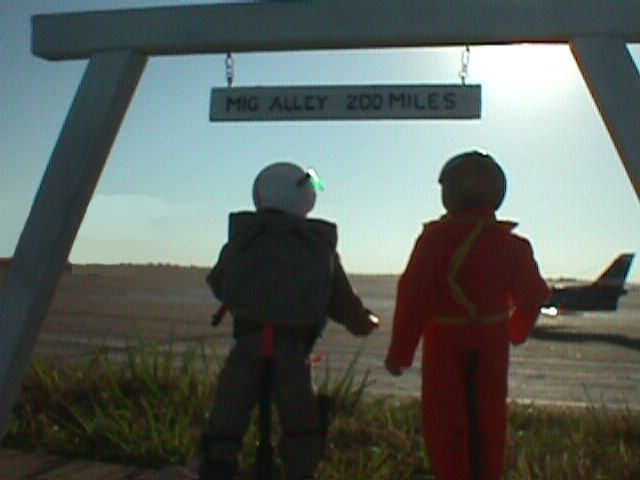
The American bureaucracy of which NASA is a part of, has by force of congressional decree and presidential inattention except in election years, become affraid to take any bold moves in manned spaceflight.
They talk a good game, the public takes it hook, line, and sinker, and nothing really ever becomes of it. The shuttle was just suppose to be a part of a shuttle-station program. Towards the end of its career, it finally did that job. But in the beginning, it was nothing more than a glorified dump truck.
And it was paid for by the American taxpayer.
Back in the 1990s, there was a chance to replace the shuttle with a newer spacecraft. The VentureStar from Lochkeed Martin or the DC-X vertical take-off/landing, single-stage to orbit spacecraft. The DC-X was a sub-scale, flight tested piece of hardware. The VentureStar was a computer animation only. Guess which one the Clinton Administration went with? That's right: VentureStar.
Then Columbia broke up on reentry.
President Bush proposed shutting down the shuttle program and replacing it with the Apollo on steroids program known as Constellation. Now President Obama will cancel even that and hope that the private sector will take over.
Well, I (slightly) agree with President Obama that it would be better for the private sector to come into its own as far as transporting folks up into Low Earth Orbit (LEO). But, the government should have kept the Constellation Program going.
I remember in a Air Force ROTC classroom in my college days, my instructor was describing the problem faced by FDR in the Pacific War. He had General MacArthur promoting a campaign that would go through the Philippines. Admiral Nimitz wanted to go straight across the Pacific to the China coast cutting the Japanese supply line in two.
President Roosvelt decided that it would be in the best interest of the war effort to go with BOTH strategys.
I submit to the reader that the same thing could have been applied to the Constellation Program. I'm on record opposing the idea of Super-Apollo, but NO American manned spaceflight program is even worse to think about.
So where this this lead us to? Private Space Industry.
In fact, I think it is going to be up to men like Bigelow and Rutan to get American civilians back up into space (without government aid). And more important, get them to the surface of the moon and back to Earth on a regular flight schedule.
Eventually, a lunar base will be built. And maybe then, NASA will get funding from Congress to lease a base on the moon.
So, are there enough deep pockets in the worldwide civilian sector to make it possible for the non-government space program to make it to the moon and Mars ? And do it before the Chinese gets there.
Check out the article "Moon dreams" from The Economist website(February 18, 2010) for the article that inspired me to write this posting.
___
Ref. The Economist, February 18, 2010, "Private-sector space flight. Moon dreams" (http://www.economist.com/science-technology/displaystory.cfm?story_id=15543675).









+033.jpg)